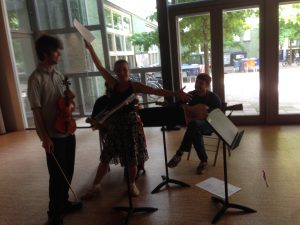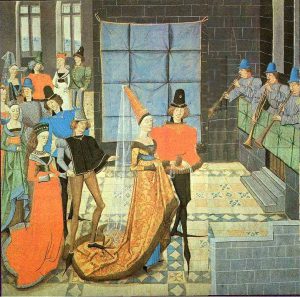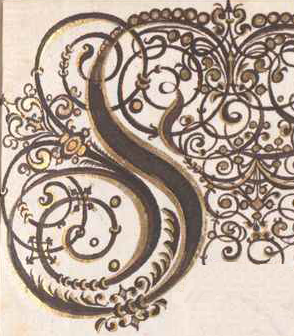FOMU Dance workshop 2017
Improvising for Rachel’s dance workshop day 1 – Basse Dance

At the Festival Oude Muziek Utrecht The Scroll Ensemble joins Rachel Farr for her dance workshops. The Scroll Ensemble is perfectly fitted to this task, since dance musicians often improvised on the music for the dancers, or even all the music. Many dance pieces were consequently also favourite improvisation standards and vice versa, many improvisation favourites had titles to do with dancing, such as the “Ballo del Gran Duca” (Ballo meaning dance).
In the following we present a playlist of the music. Sometimes we have also found links so you can listen to a version of the music! We are always happy with your support (find out here about the many ways you can support us) or your comments.
Day 2 – Allemande (click here to go to day 2)
Day 3 – Balletto detto l’Alemana (click here to go to day 3)
The Basse Danse
The Basse Dance was the main dance during the Renaissance. After the middle of the 16th century it started losing its place at the centre of dancing practices. Although no descriptions of text or music can be found before the 15th century, there is a 14th-century poem which mentions the dance:
Ses fais comme la dance basse,
Puis va avant, et puis rapasse,
Puis retourne, puis oultrepasse.
The dance is called “basse” because it was danced low to the ground (like pays bas) in co mparison to the “alta danza” or “saltarello”, which had leaps into the air.
mparison to the “alta danza” or “saltarello”, which had leaps into the air.
Descriptions of the dance can be found in several sources in Spain, England, France and Italy.
Musically the Basse Danse repertoire is also interesting. It relates strongly to the practices seen in sacred music, where one melody was improvised on according to patterns learned by the musicians beforehand. The Basse Danse then paves the way for improvisations over grounds, variations and suite-like combinations of several dances.
An Wasserflüssen Babylon
You may know this piece as a chorale melody. In fact we use it as the main character in one of our programmes! Johann Mattheson suggests that a chorale melody could be used as the basis of an entire dance suitte. This is what we are using this melody for during the dance workshop. It is then interesting that there was a certain fluidity between different types of music and in a way, all music could be an inspiration, or an ingredient in the formation of new music.
Tielman Susato – Mille Regretz as a dance (1551)
Tielman Susato‘s origin is not known and therefore some people have argued he may be from the town Soest.
He became the first music publisher in the Netherlands and also composed. He might be most famous for publishing the Souterliedekens by Clemens non Papa, Dutch psalm settings.
In this workshop we work with instrumental arrangements of two chansons: Mille Regretz and Mon Desir. This was a common practice at the time and shows how far many of these pieces travelled. It also shows that musicians in the time would not content with just playing a ‘note perfect’ rendition of an already composed piece, but felt the need to adapt it to their instrument and show their own creativity, musicality and prowess by adding variations, voices, or changing the piece in some other way.
Susato’s approach to these pieces is relatively simple. By adding the typical Pavane rhythm the chanson is easily changed into a dance. This clearly relates to the practice described by Mattheson of 2 centuries later, which we mention above.
Of course, we as The Scroll Ensemble also imagine that we should keep the thread going, and improvise with Susato’s version.
Below a few versions of Mille Regretz:
Thoinot Arbeau – Basse Dance & Basse Dance Tordion
At the age of 62, Tabourot chose the anagrammic pseudonym Thoinot Arbeau and began to write. His first publication, an almanac of religious holidays titled Kalendrier des bergers, appeared in 1582. In 1588 he wrote Compot et manual calendrier to which he appended what has now become his most famous work, Orchesographie. This work, published in 1589, was reprinted posthumously in 1596 with a modified title. With its humorous asides and lighthearted style, the treatise contains a wealth of information for historians of culture and music, as well as dance. Here it is played on racketts and cornamuses.
Passemezzo Moderno
A favourite dance piece, which refers in its title to the ‘step and a half’ in the dance. Many different versions can be found by several composers.
We use this piece often, for example here whilst improvising on a golf cart driving around Flevoland in The Netherlands.
